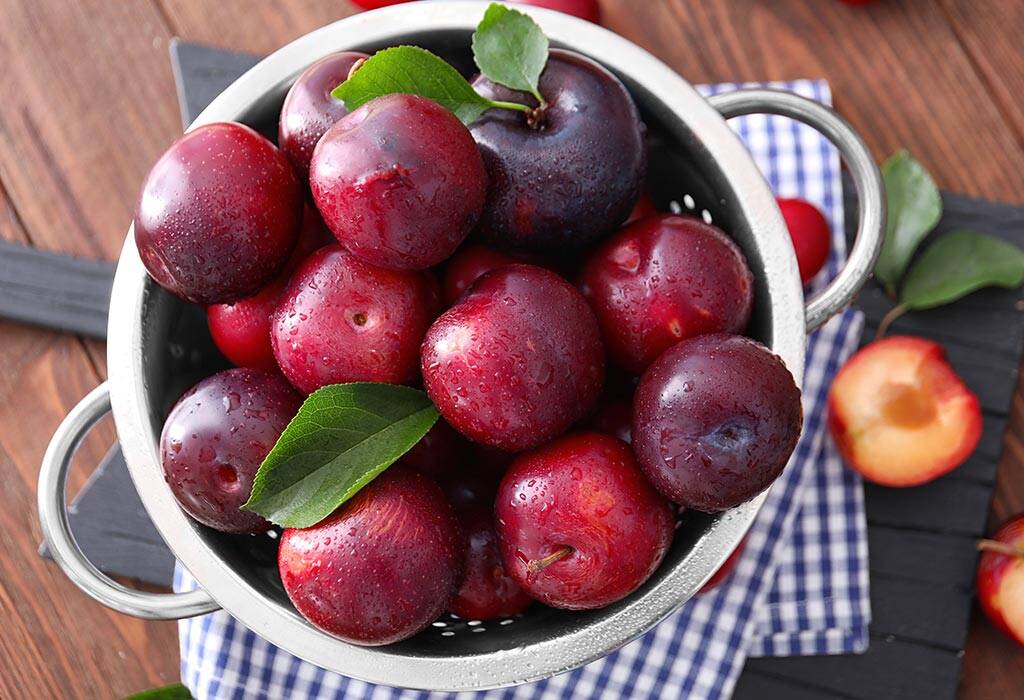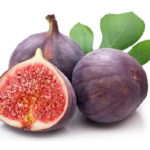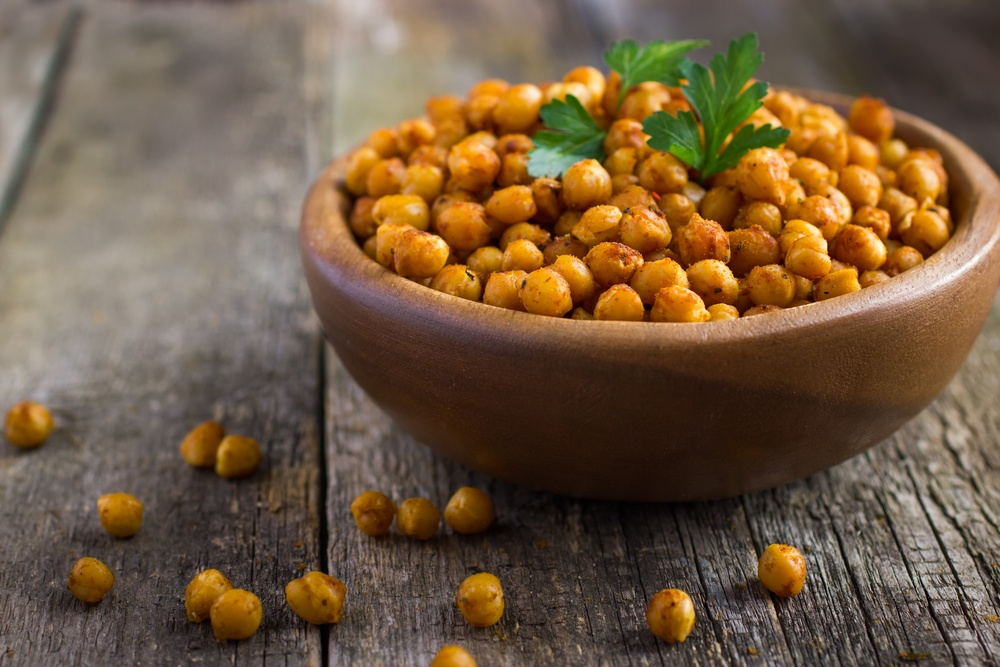HEALTH BENEFITS OF PLUM
Benefits of plum have been shown on various studies carried out universally. There is a 20% decrease in the lithocholic acid level of the feces as showed by a study carried out at the University of California.
Acids like the lithocholic acid and some biliary acids found in the feces have something to do with colon cancer cases.
The plum is one of the fruits that may be eaten and enjoyed at every season of the year. It is noteworthy that dried plum are quite effective than fresh plums. Getting the plums dried is not that difficult.
SEE ALSO: Cucumber Beautifies and Cleanses the Skin
There are over 200 varieties of plums, but the best of them all is called “Claudia”. This is in honor of Queen Claudia, the first wife of King Francis I of France.
Other names are:
- Prune
- Prune plum
- Greenegage.

The fruit of the plum tree belongs to the botanical family Rosaceae. The fruit is oval or ovoid drupe and may reach 7cm in diameter. Its woody pit contains seed that is inedible.
The plum is native to countries like Turkey and some Caucasus nations. Introduced to Europe by the Greeks and Romans. The plum then spread to North American state of California, Argentina, Australia and Chile in South America. Today, California State of North America is now one of the world’s greatest producers of dried plums (prunes).
Let’s take a look at the plum composition.
Plum Composition
The following information is based on the percentage (%) value provided by 100 grams of the food, the plum. Therefore, 100 g of its raw edible portion contains the following nutrients. The shows the composition and how we can benefit from the plum.
- Protein = 0.79 g
- Energy = 55.0 kcal 230 kj
- Fiber = 1.50 g
- Carbohydrates = 11.5 g
- Vitamin A = 32.0 μg RE
- Vitamin B1 and B2 = 0.43 mg and 0.096 mg respectively
- Vitamin B6 = 0.081 mg
- Niacin = 0.500 mg NE
- Folate = 2.20 μg
- Vitamin B12 = Nil
- Vitamin C = 9.50 mg
- Vitamin E = 0.600 mg ∝-TE
- Calcium = 4.00 mg
- Phosphorus = 10.0 mg
- Potassium = 172 mg
- Iron = 0.100 g
- Magnesium = 7.00 mg
- Zinc = 0.100 mg
- Saturated and Total fat = 0.49 g and 0.620 g respectively
- Cholesterol = Nil
- Sodium = Nil
The plum also has the following percentage (%) composition
- Fiber = 1.50%
- Carbohydrates = 11.5%
- Fat = 0.620%
- Minerals = 0.390%
- Protein = 0.790%
- Water = 85.2%
Some Properties and Indications of the Plum
All varieties of plum come in the same composition. The difference is only noticed by their sugar content. Their natural coloring is another determinant regarding plum varieties.
According to healthline.com, plum is an excellent source vitamins and antioxidants, and this is one of its enormous benefits. Plums contain a balanced proportion of all the minerals and vitamins aside vitamin B12. They virtually or scarcely contain proteins and fat. Another property to look at is the abundance of vitamin C and moist contents the raw plums have. Prunes (dried plum) do not have much vitamin C like raw plums.
READ ALSO: Tomato is a Healthful Food for the Prostate
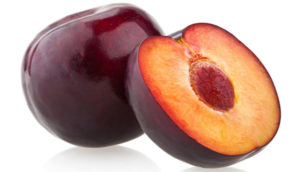
Vegetable Fiber: The primary vegetable fiber is pectin which is soluble. Raw plums or fresh plums contain about 1.5% but the prunes is about 7%. The volume of feces is increased as pectin which is a complex carbohydrate absorb water in the intestine. This effect also fosters evacuation and thereby aiding elimination of cholesterol and biliary salts.
One of the important roles and benefits of plum is their laxative effects, they are diuretic, hypolipedemic, and that is to say, they bring down blood lipid level and also depurant in their roles.
The plums have the following healing applications:
Prevention of cancer of the colon (colon cancer): As stated at the beginning, the study carried out at University of California showed that the higher the concentration of lithocholic acid and other biliary acids in the feces the greater the risk of colon cancer but regular consumption of the plum is an appropriate and highly recommended for those at risk of colon cancer regardless whether for lifestyle or genetic reasons.
For Chronic Disorders: The plums are gently diuretic, depurant and also detoxifying. This outlines of the benefits of plum. Here, it is a good thing that they are very suitable in cases of excess uric acid, gout, rheumatism, liver disease due to the fact that they are low in protein, sodium and fat. It is healthful practice to add prunes or plums in one’s breakfast.
FIND OUT ABOUT: Bulimia Nervosa An Eating Disorder
Eating fresh plums regularly and the prunes throughout the year removes intestinal disorders. It is also good to note that prunes have more pectin and some active ingredients.
As the case may be, a wonderful or an ideal breakfast to stop or combat constipation and have the intestine protected is to make sure the breakfast contain yogurt, prunes, honey and some slices of bread (whole grain) or rye bread.
Prunes have the following percentage (%) composition.
- Fiber = 7.10%
- Minerals = 1.76%
- Carbohydrates = 55.6%
- Fat = 0.520%
- Protein = 2.61%
- Water = 32.4%
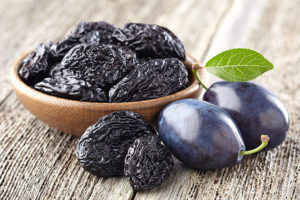
Based on a 2000 calorie diet, percentage daily value provided by a hundred gram (100 g) of prune dried have the following composition.
- Energy = 239 kcal = 1,000 kj
- Carbohydrates = 55.6 g
- Protein = 2.16 g
- Fiber = 7.10 g
- Vitamin A = 199 μg RE
- Vitamin B1 = 0.081 mg
- Vitamin B2 = 0.162 mg
- Niacin = 1.96 mg NE
- Folate = 3.70 μg
- Vitamin B6 = 0.264 mg
- Vitamin B12 = Nil
- Vitamin C = 3.30 mg
- Vitamin E = 1.45 mg ∝ -TE
- Phosphorus = 79.0 mg
- Calcium = 51.0 mg
- Magnesium = 45.0 mg
- Iron = 2.48 mg
- Potassium = 745 mg
- Zinc = 0.530 mg
- Total Fat = 0.520 g
- Saturated fat = 0.041 g
- Sodium = 4.00 mg
- Cholesterol = Nil
Some other benefits of plum is that it is an ideal laxative, prunes and plum are good for children and for the elderly.
Preparation and Use
- For culinary preparation: With prunes and plums, varieties of dishes are made; compotes and jams. Their laxative effects are also felt and noticed in these.
- Prunes: They may be soaked overnight but they can also be eaten as they are. In the morning, take 12 to 13 prunes. This is the normal dose.
- Fresh plum: They must be well ripe so as to be well tolerated by the stomach.
SEE MORE ARTICLES BELOW OR CLICK ON BLOG TO SEE OTHER ARTICLES
Perfectionism: How To Prevent and Overcome Perfectionism
Natural Treatments for the Brain
Natural Treatments for the Brain
Barriers that Hinder Healthy Relationships
Spinach Provides Strength to the Muscles and Protects the Retina (eye)
Java Tea: Its Uses and Benefits
Cornflower: A good remedy for the eyes

A graduate of Computer Science and Information Management Technology. Diploma – Caregiving, Certificates – Dementia and Diabetes Awareness and Management. A researcher, blogger, songwriter, singer and acoustic guitarist. Born in an environment where natural talents such as healing are imparted at our natural birth. This natural talents of healing is the result of our genetic inheritance and the training from family environment.

